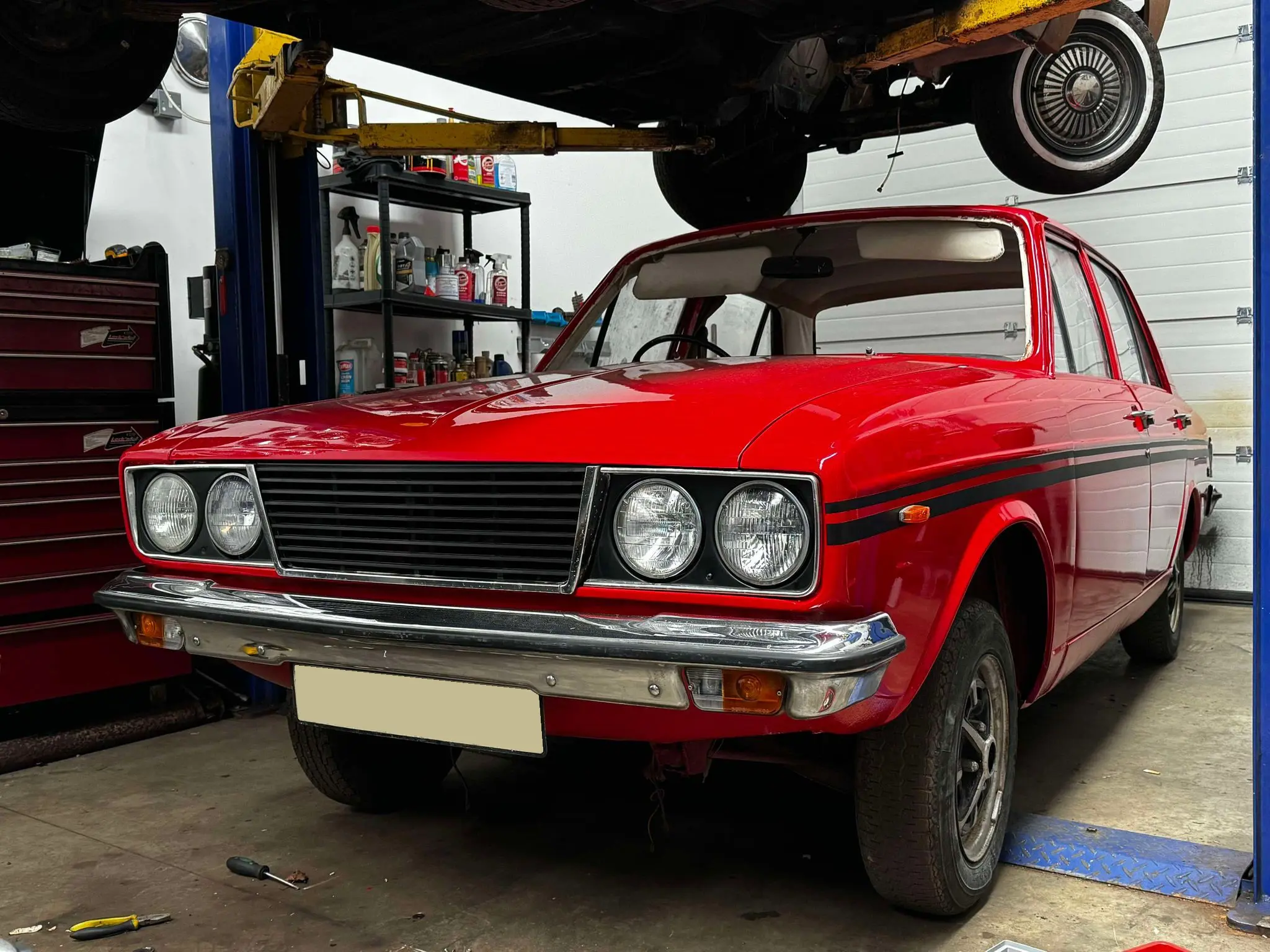Meet the Owner – Amir Keshvari and his 1978 Chrysler Hunter Super
09 October 2024
Last year, we featured Amir’s last-of-the-line Sunbeam-badged Vogue, one of his remarkable line-up of the Rootes Group’s Arrow family. His latest acquisition is even more distinctive, for this is not a Hillman Hunter but a Chrysler-badged version. When it returns to the road it will be the sole Chrysler Hunter Super in use: https://www.howmanyleft.co.uk/vehicle/chrysler_hunter_super

By 1976, the design was approaching its tenth birthday. However, Autocar noted: “Many managers still retain a great affection for, and loyalty to, the old Hunter.” At the end of that year, the Humber Sceptre and the Sunbeam Rapier may have been no more, but the Hunter remained as a conventional, three-box RWD alternative to the recently launched, FWD five-door Chrysler Alpine.
In September of the following year, the Hunter lost its Hillman badges and became known as a Chrysler, gaining a Sceptre-style grille with quad headlamps. “A new name, a new look, a superb car,” promised the advertisement. Plus, the entry-level De Luxe now had servo-assisted front disc brakes and “an attractive side coachline”, meaning it was worth every penny of its £2,720 price tag.
Meanwhile, all ambitious types who aspired to a world of fondue parties and After Eight Mints craved the Super. A mere £3,098 gained you the decadence of a heated rear window, a trip recorder, a voltmeter, reclining front seats, a dipping mirror and reversing lamps. Not to mention, “The Hunter Super now has a vinyl covered roof, side repeater flashers, sports-style road wheels and new seat fabric”.
Just in case such luxuries turned prospective buyers’ heads, Chrysler launched the revised Hunter at the Royal Agricultural Show in Kenilworth to give a message of solid value for money. It was “a car expected to work for its living” and “You only have to look at the number of companies choosing Hunters for people needing cars for business”.
But fleet managers who were not loyal to the Arrow preferred the Ford Cortina 1.6 L at £2,975 or the Morris Marina 1.8 SDL at £2,827. Neither claimed advanced engineering, but the Hunter’s design harked back to an era when Herman’s Hermits’ No Milk Today reached No. 7 in the Hit Parade. The Vauxhall Cavalier 1600L, at £3,058, also highlighted the Hunter’s age.
There were also some grumblings that the Hunter was no longer a domestic product, as Chrysler made it in its Santry plant, near Dublin. In the late 1970s, many private and business customers still deemed a car’s origins significant, but sales continued until 1979. By then, Chrysler had sold its European operations to Peugeot, while the imminent launch of the Talbot Solara in early 1980 meant the Arrow could finally be retired in Europe.
Of course this was not the end of the story. The Rootes Group and the Iran National Company signed a “technical assistance agreement” in 1965. The Iranian-built models were known as the Paykan (Arrow in Farsi), and the plant opened on the 16th of May 1967. Advertisements stated: “Hopefully, one day every Iranian will have an arrow.” The last of 2,295,095 Paykan saloons left the production line on the 15th of May 2005.
Amir is from Iran and says: “I grew up with the Paykan, and all my memories are with the Arrow cars.” One now belongs to his fleet (look out for another blog this autumn), and his efforts have saved a fascinating array of cars that are still overlooked in the classic press. The red Chrysler is also of vast interest to this writer, as I can recall seeing publicity about them in the 1970s but never encountering one on the road. Amir even prefers it to the high-performance Hunter GLS: “To be honest, for me, the Chrysler is one of the best models.”
And the idea of side indicator repeaters as a luxury item makes 1977 seem like another age.
With thanks to Amir Keshvari for his time and permission to use the images in this blog.
